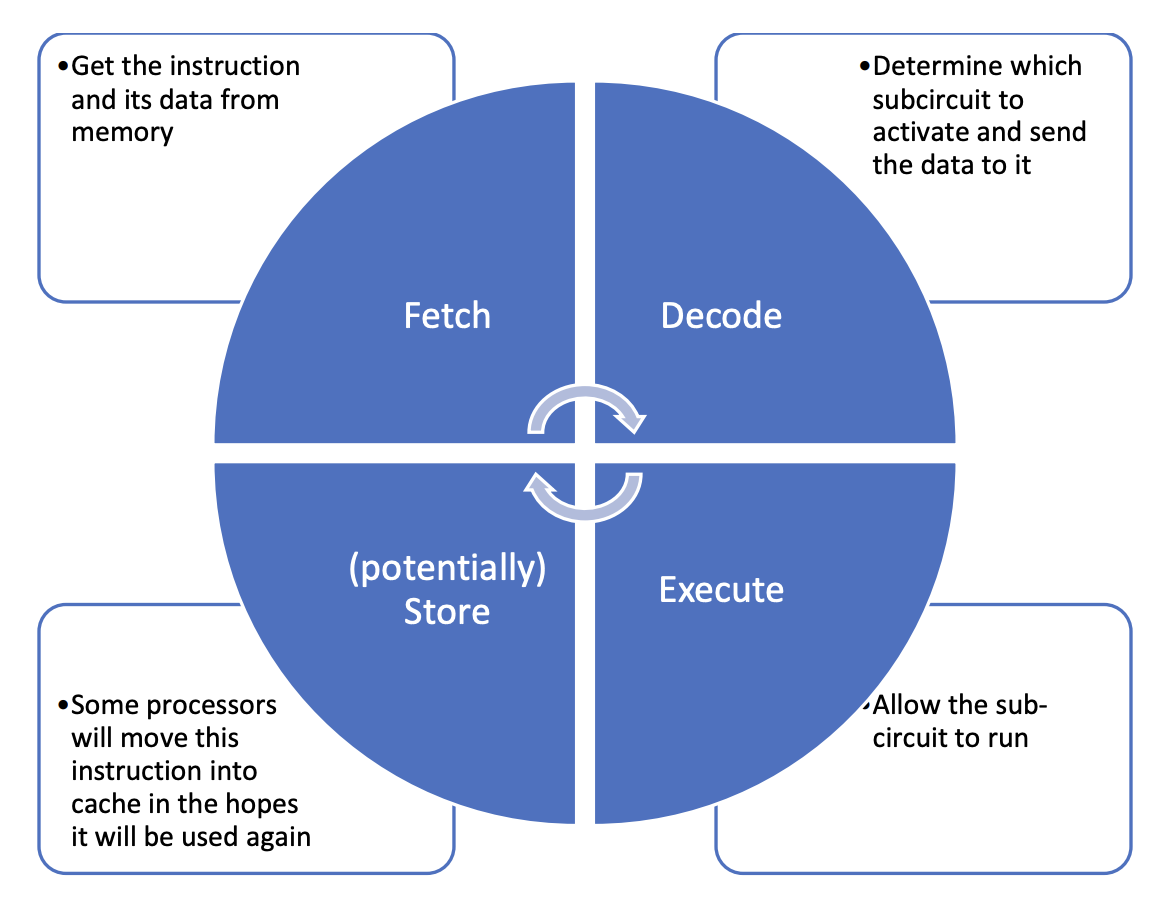A program is comprised of instructions and data.
- An instruction is just a subcircuit on the CPU that is presented with voltages, which are then modified to produce a result.
- Voltages are stored in memory (RAM/flash memory)
The CPU has to perform same steps repeatedly to keep itself fed with instructions. This is the instruction decode cycle:
- Fetch (get data)
- Decode (figure out what to do with data)
- Execute (actually do what was decoded)
- Store (write back to memory or just store this instruction in cache for future speedup)

Connecting every instruction to every memory address is impractical. Instead, they are connected the instructions to a few memory locations (registers), and then to connect these memory locations to a memory bus, which itself is connected to main memory. This reduces the size of the circuitry at the expense of speed.